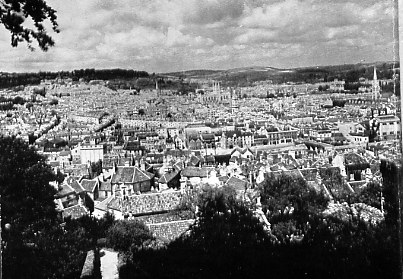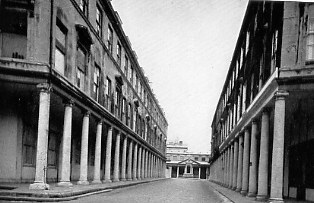

If we owe regard to the memory of the dead, there is yet more respect to be paid to knowledge, to virtue, and to truth. She died young. On July 18, 1817, Jane Austen was not yet forty- two. Her mother, Cassandra Leigh Austen; her siblings, five older brothers, James, George, Edward, Henry, Frank; one older sister, Cassandra, and one younger brother, Charles; were all still alive. Although the third brother, Edward, had been adopted by a wealthy couple, changed his last name to Knight and been made heir to a large income, his right to it was disputed, and none of the other brothers had achieved anything like secure affluence or position. Pivotal events in the Austen family history, their own spare way of life and continuous discipline in tenuous networks of patronage had taught, and their numerous progeny continued to remind them to be cautious about saying or doing anything which might damage their respectability or offend someone in a position to help them. The brief biography of Jane, published within seven months of her death by the fourth brother Henry, is a defensive panegyric which reveals that the family regarded public curiosity about her warily. It did what it was meant to do: for over a century it forestalled depictions of her, and deductions about any one of them, drawn from her book's satires or what had been surmised about her when she was seen or heard by others in public.1 She had published but four novels, Sense and Sensibility (1811), Pride and Prejudice (1813), Mansfield Park (1814) and Emma (1815). Two more, Northanger Abbey and Persuasion, were published with the above biography (1818). None of these books are over-long, hard to read or erudite. They are all novels which many readers have understood as semi-realistic love stories meant to end in fulfilling socially appropriate marriages for attractive exemplary heroes and heroines. She had written in the same appealing mode the opening segments of three more, Catherine, or the Bower, The Watsons, and Sanditon. She had completed a burlesque of the more egregiously sentimental novels of her era, Love and Freindship, and an epistolary novel, Lady Susan. All five are very short: they each take at most an evening to read. Three slender volumes of erratically farcical material (sketches, drafts of novels, skits and parodies), today called the Juvenilia or Minor Works; two cancelled chapters of Persuasion; a tiny amount of verse; and Sir Charles Grandison, or The Happy Man. A Comedy, an uneven dramatisation of material adapted from a famous eighteenth-century novel, comprise the rest of the imaginative work she managed to write in a form fixed enough to induce her family to preserve it.2 She had been financially dependent on these people all her life. When in January 1796, ten months before she began to write First Impressions (the first version of Pride and Prejudice), and just after or while she was writing Elinor and Marianne (the first version of Sense and Sensibility), she told Cassandra 'I write for Fame, and without any view to pecuniary Emolument' (Letters, p. 3), she could not have foreseen how small her emolument would be.3 Her earnings are easily totted up. In July 1813 she declared 'I have written myself into £250' (Letters, p. 217), this for the first edition of Sense and Sensibility and the copyright of Pride and Prejudice. The year she died the second edition of Sense and Sensibility brought her another £32.8s, and Mansfield Park and Emma £348.18s. Northanger Abbey had been a humiliating wash: in 1803 the copyright to, and an earlier version of Northanger Abbey she called Susan, were sold to Richard Crosby, a London publisher, for £10. Six years later to a letter she wrote Crosby in which she attempted to pressure him to publish Susan by threatening to publish it herself, Crosby replied there had been no stipulation for any publication, and he would 'take proceedings to stop the sale'; he was, however, willing to sell it back 'for the same as we paid for it' (Letters, pp. 174- 75). Seven years after that or in 1816 one of her brothers (which one we do not know) reclaimed the copyright by repaying the £10. Further, except for her letters to Crosby, a conference she and Henry had with Thomas Egerton (the man who had published the first edition of Sense and Sensibility on commission) about publishing a second edition, and, after Henry had become gravely ill, her correspondence with John Murray (who published a second edition of Mansfield Park and the first of Emma), her father, George Austen, Henry and his lawyer, William Seymour, and another brother had acted for her in all her business negotiations as an author. In the brief biography Henry described as extraordinary that, since she doubted the sale of Sense and Sensibility would repay the costs of printing, his sister 'actually made a reserve from her very moderate income to meet the expected loss' (Biographical Notice, p. 32). This very moderate income was the £25 a year allowance her mother gave her, which just about covered her laundry, clothes and out of pocket expenses, letters and parcels, occasional journeys, attendance at plays, book rentals, and charitable gifts. Austen herself remained aware that for the first edition of Sense and Sensibility she owed 'dear Henry a great deal of Money for Printing &c' (Letters, p. 250); there is no sign he asked her for this £180. She had depended on Henry to monitor Egerton and the printer over delays ('I have scarcely a hope of its being out in June. -- Henry does not neglect it; he has hurried the Printer'), and sold the copyright of Pride and Prejudice for less than she had wanted to, because she wanted to spare Henry aggravation and loss of time: P&P is sold. -- Egerton gives £110 for it. -- I would rather have had £150, but we could not both be pleased, & I am not at all surprised that he should not chuse to hazard so much. -- Its' [sic] being sold will be a great saving of Trouble to Henry, & therefore must be welcome to me. (Letters, pp. 182, 197).4 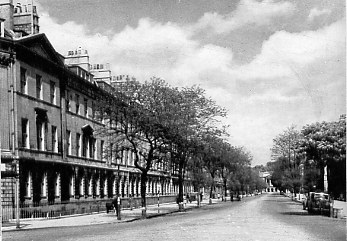 Of course financial and also emotional dependence on one's family was not unusual for a woman of Austen's upbringing as a clergyman's daughter in the country and status as an unmarried gentlewoman. What was unusual was her writing, that 'life of literature' Henry spoke of (Biographical Notice, p. 29), and 'her extraordinary powers of mind', the third major attribute her family accords her in the epitaph inscribed on her tomb. She was different from most other women she came across, and this difference made important decisions which today would have been hers -- like where she should live, who live with, what she should spend her life doing and what would gratify her tastes as an individual -- more than a little at odds with the choices just about every member of her family would make for themselves, and which she had to concur with as their dependent. In November 1796, about a month after she had begun First Impressions, her mother wrote Mary Lloyd, who was soon to marry James, the oldest brother, that she felt 'heartfelt satisfaction at the prospect of adding' Mary to her children, because Mary would be 'a real Comfort' to her in her old age when Cassandra had 'gone into Shropshire [to marry], & Jane -- the Lord knows where' (Austen Papers, p. 228).5 Twenty years of writing and many versions of novels and four published ones later, in July 1816, Jane had not succeeded in going anywhere. In a letter she wrote that month to her nephew, her oldest brother, James's only son, James Edward Austen-Leigh, just after Henry's bankruptcy had forced her to return to Chawton and she had begun to feel the first effects of her fatal illness, I hear a plangent cri de coeur: Oh! it rains again; it beats against the window' (Letters, p. 316), words which voice a sudden inwardly-writhing frustration. She also left letters. How many no one today knows. In the most recent scholarly edition of what is left of these Deirdre Le Faye uses the word 'collected' rather than 'complete'. This book contains 158 letters by Jane, of which seventy are to Cassandra, and sixteen to Anna Austen Lefroy, the oldest Austen brother James's older daughter, one of two nieces close enough to Jane in age to be treated as (in her phrase describing the other) 'almost another sister'. There are ten to Caroline Austen, James's younger daughter. There are less than ten to anyone else. There are eight to Frank, the brother closest to her in age -- they were one year apart -- who was to become Admiral of the Fleet. There are six to Fanny Austen Knight (later Lady Knatchbull), the third brother, Edward Austen Knight's oldest daughter and her other sister-niece; five to John Murray; and four to Martha Lloyd, with whom she, Cassandra and their mother lived for a time and whom she and Cassandra called their partner (much in the way couples today refer to one another when they are not married and living together). There are three to her nephew James Edward; and there are three to James Stanier Clarke, the Prince of Wales's librarian. There are eight more to eight people, with only three of whom can we say for sure that she had a close relationship: Alethea Bigg, a long-standing friend from Austen's Steventon childhood; Charles, the other sailor brother, four years younger than she; Anne Sharpe, a woman who had worked as a governess at Godmersham, Edward's home, and who lived as a paid companion, a rare congenial literary friend to Jane. This is not much. These letters are also difficult to draw inferences from or relate to the fiction because they, letters by others who knew Austen intimately and other contemporary documents we have indicate Jane Austen wrote letters regularly to other people beyond Cassandra, and that the proportional representation of what has survived is misleading. Jane and Henry's second wife, Eliza Hancock de Feuillide Austen refer to a correspondence that Jane kept up with both of them from the 1790s on. Jane makes frequent references to news she has had from Anne Sharpe or Martha Lloyd in response to something she has told them. When Frank and Charles were at sea, she kept them informed of all the family news and received letters from them, and when Frank was in England, she and he wrote to one another simply because they were apart. She wrote an indeterminate number of people from or to whom no letter has survived: among these, her third brother, Edward; Edward Cooper, a cousin; her mother's brother's wife, Aunt Jane Leigh-Perrot; Cooke cousins who lived in Great Bookham, Surrey; Miss Irvine, a friend from her Bath years; Betty-Anna-Maria Harwood known by her at Steventon and Bath; Buller friends, male and female, at Bath and in Devonshire; and the other Steventon Bigg sisters, Catherine and Elizabeth (who in the letters becomes Mrs Heathcote). 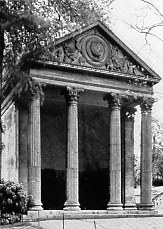 There are also gaps of days, weeks, months and even years for which no letters have survived during which time the extant record demonstrates that Austen wrote letters. During the five years she lived in Bath, if we exclude three letters she wrote to Frank upon the death of their father, and count only those written from Bath itself, only five remain, and these are all to Cassandra. These and Austen's few other extant letters which survive from this time and just afterwards show that while in Bath far from cutting herself off from relationships beyond the one with Cassandra, she maintained them and contacts with more distant and less frequently seen old friends, and she made new ones. Starting in May of each year and sometimes through to November, she, her sister and parents, sometimes accompanied by one or more of her brothers and one or more of their wives travelled along the towns of the southern seacoast. Sometimes the group splits up; there is a parting, and a reconfiguration as as a few travel inland, east into Hampshire, Kent, and others go to Surrey or Sussex or west to Devon or down to Weymouth. There were travel plans to make, arrangements with yet further people about where to visit and where to stay. In the extant letters from the later periods of Austen's life, when she is living at Southampton, in London, visiting her brother in Kent, and in her final years at Chawton, Jane has written to friends and other family members about plans she had made or may now have to rearrange. She writes of conveying news of what's happening in her part of the world to various people elsewhere. From all these years of journeying from and to Bath, of much picturesque experience of which Henry wrote Jane was much 'enamoured' (Biographical Notice, p. 33), only one letter survives, from Lyme. Of course what happened was the family as a group did not save and some individuals destroyed the missing letters. In another early memoir, written in 1867 by Caroline Austen, Caroline confirms 'My Aunt [Jane] wrote very fully to her Brothers when they were at Sea, and she corresponded with many others of her family'. Caroline records that the extant letters by her aunt Jane represent only the smaller part of what she wrote to Cassandra and that those few to Cassandra that Caroline had been permitted to see had all been excised to hide events that happened to Austen and her thoughts about them as well as to conceal or distort the meaning of the residuary passages: 'My Aunt [Cassandra] looked them over and burnt the greater part, (as she told me), 2 or 3 years before her own death -- She left, or gave some as legacies to the Nieces -- but of those I have seen, several had portions cut out -- ' (Aunt Jane, pp. 9- 10).6 Frank's eighth daughter, Catherine Anne (who became Catherine Hubbard) saw a group of letters Jane had written to Cassandra about the trauma Jane had known when in December 1802 she accepted and then hastily rejected a proposal of marriage from the wealthy younger brother of the Bigg sisters. These Cassandra destroyed. Fanny Austen Knight received thirty, not six letters from her aunt. A collection of letters and other documents by (among others) Jane's mother and father, James, Edward, Henry, Frank, Charles, Eliza and Philadelphia Walker (a first cousin to them all), and Jane Leigh-Perrot, frequently end with the command 'Burn this!' or 'Pray do not neglect burning this'. There are many excisions from Eliza's and Philadelphia's letters, most of them in places where Eliza's biological father, Warren Hastings, has just been mentioned or referred to in the text.7 Not all the Austens of Jane's generation and increasingly fewer who belonged to the later generations wanted the family's private papers destroyed. It was not Jane but Cassandra who burnt 'the greater part' of Jane's letters, and she only committed them to the fire when in 1842 she understood her own death could not be far off. Jane's letters to Eliza and Henry and hers to them were left in Henry's hands, and they have not survived. However, Frank, throughout a long mobile life, carefully preserved Jane's letters to his first wife, Mary Gibson, and her packets of letters to himself and to Martha Lloyd (who became his second wife). It was Frank's youngest daughter, Fanny-Sophia, who destroyed these and she did so after her father's death (Family Record, p. 252). She acted without consulting anyone beforehand because by that time mores had changed and other of Frank's children and grandchildren would have objected. Happily Philadelphia Walker had no direct descendents who felt their reputations or self-esteem put at risk by the existence of Eliza's letters to her, and she lived long enough so that upon her death these letters fell into the hands of someone disinterested enough to save them, though in a somewhat mutilated state. A record of Jane Austen's great-grandmother, Elizabeth Weller Austen's steady courage, which enabled Jane's branch of the family to maintain the status of gentleman and amass wealth and prestige, survives in a seventeenth century manuscript because several generations of Austens who descended from her second oldest son, the attorney, Francis Austen of Sevenoaks, preserved it (Austen Papers, p. 2). The children and descendants of three of George Austen's sons (or Jane's brothers) worked to preserve and to publish what had been written by Jane and left unpublished by her generation after her death. All three of James's children, Anna Lefroy, Caroline Austen, and James Edward Austen-Leigh; and their descendents, Anna's third and fifth daughters, Fanny Caroline Lefroy and Louisa Langlois Bellas, and James Edward's daughter and two sons, Mary Augusta and Edward Compton and William; and James Edward's grandchildren, Richard Arthur and Emma Austen-Leigh struggled with other Austens to get, and succeeded in saving or communicating what they had of Jane, and published it. In her 1911 memoir of her father, Mary Augusta Austen-Leigh justified Cassandra's destruction of her sister's letters; however, she also explicitly mourned this loss and testified to a strong attempt upon several people in the family to overcome Cassandra's act. Mary Augusta writes that Fanny Knight's youngest daughter, Louisa Knatchbull 'searched more than once but in vain' for Jane's letters to Fanny; that Fanny's oldest son, Edward Knatchbull-Hugessen, Lord Brabourne, aimed to publish all he could find because 'the interest of these' would have been 'great'; the problem with those to Cassandra is their 'value' has been great diminished by the fact -- well known to our Aunt Caroline -- that Cassandra herself carefully destroyed every letter, or passage of a letter, which she considered important or interesting. This was done on principle. She objected to publicity, and for fear of what might possibly be done with these letters in the future, she determined to remove everything that might tempt another generation to publish them, and to preserve only those that dealt with the most trivial and ordinary subjects. Having thus, as she considered, destroyed the grain and nothing but the chaff ... what she thought would be 'worthless to the world', have no meaning for others, was bequeathed to a few relatives. These James Edward, with the help of Caroline and Anna 'who gave him every assistance in their power' did what he could to present to the world in a framework that would return to them some meaning and value. Catherine Hubbard, her son John Hubbard, and his daughter, Edith C. Brown, did the same for those of Jane's letters to Frank that came into their hands. With all its excisions and rearrangements, Lord Brabourne's two-volume life and letters of Jane Austen was a attempt to offer reflections about and memories of Jane from people who knew her or who knew those who knew her, to re-inject value and meaning into what had been gouged away.8 A little reflection reveals the fallacies in one of the many myths that frame Jane Austen's writings, the myth that there has been some sort of conspiracy or united phalanx of distortion and silence to hide some specific event or events, aspect of Jane Austen's personality or angry comments she made about close relatives that the family as a group found distasteful or feared would provoke discord.9 It takes just one person and a few minutes' time to destroy a document; a pile of letters might require fifteen minutes; to mutilate one is a moment's effort with a scissors. It takes many determined people as well as extra room in a house to preserve documents. Fear of rumour's power, scandal, and obtuseness, obtuseness itself, a sudden emotional reaction to something perceived as startling or shocking, and chance have taken a perhaps heavier toll on Jane Austen's papers than it has on other well-known writers because she died young, relatively unknown, and left her papers in the scattered hands of a few people and these ended up in the hands of a few of their descendants who did not or could not share, understand or fully sympathise with an attitude towards writing different from their own. The myth has lasted because it is too useful; it has allowed and will continue to allow biographers to conjecture stories out of the silence, from the lack of evidence, or present a picture of her which the extant letters contradict. 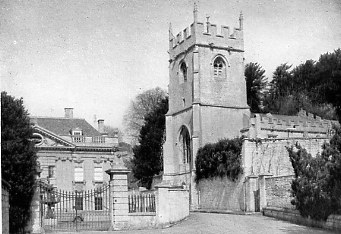 The scarcity of evidence for Austen's adult years in Bath and Southampton years has invited much contradictory commentary. One group of writers are sympathetic to and enter into the extant Bath letters which show us a woman alienated from those around her, one who writes with a mocking detachment and downright hostility about the people close to her, Bath, and the people she encounters more casually, whether in Steventon, Bath or Southampton. They take seriously her ironies which expose as hypocrisy much that everyone around her professes to think or to feel, and infer a characteristic state of mind for her during these years. One biographer tells us that 'the ejection from Steventon . . . depressed her deeply enough to disable her as a writer'. It is assumed that Austen could only write fiction when she was personally happy or tranquil. Cassandra destroyed the missing letters because they recorded Jane's sadness, bleak desperation and low spirits too frankly, and, except in the fiction, and as Fanny Price, Anne Elliot or Marianne Dashwood, Jane didn't write it down intelligibly anywhere else: It was unnecessary to state that she was penniless, dependent on her brothers, and obliged to accept whatever living arrangements were chosen for her. These were not things you wrote down; if possible, you did not allow yourself even to think about them. 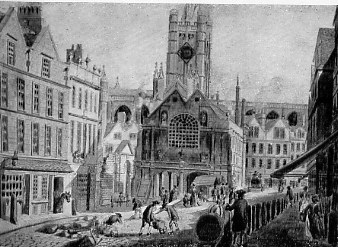 A second biographer tells us that, like her heroine in Northanger Abbey, Austen was eager to go to Bath, relished its social life and external elegance; like her heroine in Persuasion, she found beauty in the seacoast towns, and was exhilarated by change and adventure. The reason she wrote so little fiction is that unlike us but like her relatives she saw her writing as less important than her roles as sister, aunt and friend to others. We have been misled by an inconsistent story about how Jane fainted away with distress when at age twenty-five she was told she must leave Steventon and move to Bath. Her family has wanted her readers to see Jane as retiring and self-effacing, as someone who preferred seclusion within her family to city luxuries, someone who had no need for money, and thought little of fame. It is implied that letters which would demonstrate she cared about money, fame and luxury and wanted to enter into other social worlds than that of her family were among those destroyed and the remnants of such attitudes in the extant letters misread. 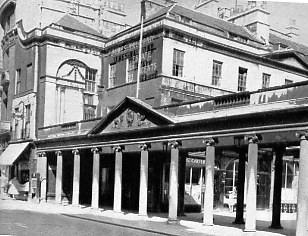 Then there is the directly opposing point of view that while at Bath and Southampton Austen wrote a good deal: she attempted to publish a novel called Susan, and revised old and produced new drafts which she later brought with her to Chawton. She simply carried her manuscripts about her wherever she went. A memory recorded by Edward's third daughter, Marianne Knight, of three of Jane's visits to Godmersham in 1808, 1809 and 1813 when Marianne was seven, eight and eleven, supports this picture: 'I remember that when Aunt Jane came to us at Godmersham she used to bring the MS of whatever novel she was writing with her'. A recent biographer presents Austen as an irritated frustrated woman who thought of herself as a professional writer because during these years she tried to publish one book and copied out her other manuscripts to look like books. We cannot see Austen writing away because we are missing revealing letters; this was an important activity to her which family sought to hide. It is admitted she seems to have colluded in this distortion for public consumption of how she spent her time.10 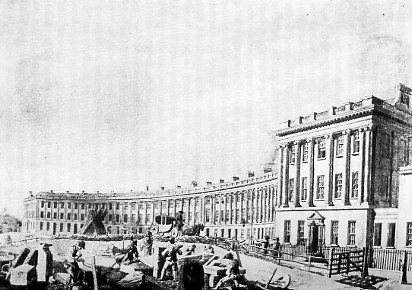 The lacuna of letters by Austen also allows people who refuse to credit what is on the pages of the extant letters to dismiss them as unrepresentative and not to be taken seriously. One group of writers postulates a sunny personality: in Bath Jane as ever made the best of things, and no matter what she says to the contrary, enjoyed herself. The letters which registered her cheerfulness while at Bath contained other matter about her relatives which Cassandra to avoid any family discord were destroyed. The argument is posed as a rhetorical question: Can we believe that Jane would be so perverse as not to love Bath?11 Contrary to what Caroline, the Austen-Leighs, Catherine Hubbard, Mary Augusta Austen-Leigh and other relatives said, Cassandra only destroyed that which would hurt the feelings of close living relatives. What twentieth-century readers have found unkind and bitter are moments of playfulness written down in continual fits of hilarious sour pique meant for her sister's eyes. We are in a mental world constructed by one for the delectation of another unmarried dependent woman living on a small income. Such discontentment is a natural way of releasing tension. It is unserious chat. This may indeed be how Cassandra read or hoped others might read the remnants of her sister's letters. This argument that what we have is an odd woman at play, has also produced contradictory pictures of Austen as woman sheltered by a hard-working family who were going about the hard business of life and who was at the same time 'very much in the world'. She is made to enter into the world of Bath though references in her letters to social scandals she heard about; the cases are fully explored by the scholar, his or her knowledge of these attributed to Jane, and she is applauded for a supposed worldly stance. Against this, but coming out of the same notion that the letters we have represent a somehow skewed or unbalanced picture of the world, and that Jane's other letters (if only the family had not destroyed them) would provide a picture of Austen we could sympathise with, come pictures of a neurasthenic Jane looking to her sister or a networking Jane looking to other women for security and support. This last one is shored up by an analysis of Lady Susan and The Watsons, said to be written while Austen was living at Bath, books which show women preying on one another.12 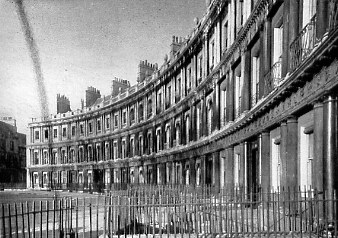 It has not always been thus. There was a time when it was in no one's interest to construct arguments derived from a lack of letters by Jane Austen. While it is only since the first three decades of the twentieth century when English literature became the subject matter for a recognised discipline in universities which could award a successful student a degree, and schools of thought emerged which treated novels as serious cultural imaginative documents, that Austen's works could become a basis for someone's career advancement or a focus of highly idealistic philosophical or politised critical books, there were in the nineteenth century some European and American novelists whose work was praised strongly, sold well, who were respected by the public and educated and powerful individuals alike as playing an important role in their lives as imaginative, highly entertaining or colourful teachers of morality and as trenchant critics of social injustices in contemporary society. For more than forty years after her death, except for a very few discerning critics and readers, Jane Austen was regarded as just another later 18th century lady novelist, superior to them in her understanding of human nature and use of probability and humour, but inferior too, duller (because of the unobtrusive nature of her effects), without inspirational idealism, someone whose picture of social manners is dated and limited. This objection to Austen's books surfaces today in the still widely-held view that her books take little notice of the tumultuous revolution and war going on in France in the 1790s, a period of political reaction in England throughout the Regency, and central events in the Napoleonic era. The charge that in her novels Jane Austen does not seem to know or to care about political and social realities beyond those that affect the small class of people with whom she associated as equals, and did not identify with anyone outside this milieu has not disappeared. Some still regard Jane Austen's work as for connoisseurs; she was and still is a novelist's novelist, her books for those able to appreciate subtle quiet art. And between 1818 and 1882, there were few collected or individual editions or translations of the six now well-known novels.13 The flashpoint of change was the publication by her nephew James Edward Austen-Leigh of his A Memoir of Jane Austen in 1870; its first documentable result, in 1882 the first of many many collected and individual editions of Austen's six novels to come as well as (by the year 2000) uncountable translations. The 1882 edition, a deluxe reprinting of the 1832 set of six by Richard Bentley, and called the Steventon Edition of Jane Austen's Works also included Lady Susan, Austen-Leigh's Memoir, picturesque woodcuts of Steventon Parsonage and Chawton Church, and as its frontispiece a reproduction of an 'improved' version of one of Cassandra's two sketched of Jane, the first of many 'improvements'. This one was drawn by Mr Andrews of Maidenhead. 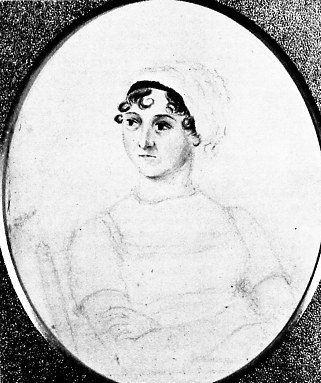 The portrait by Cassandra of the actual woman, Jane Austen, and the one substituted for it by Austen-Leigh are significantly different. The woman Cassandra drew is dressed plainly in a muslin dress with no trim whose highest line curves slightly around the bottom of her neck. Tightly stiffened waves of dark brown hair are held down on her forehead by a dark headband. The cap which contains the rest of her hair looks slightly awry: it looks over-washed and floppy. It contains too much hair for its size. Jane Austen leans upright against a simple wooden ladderback chair. Her cheeks are full, but the bottom half of an otherwise heart-shaped face is drawn down tautly. She has pinched grey lines about her nose and black half-lines and grey shadows over and under her eyes which seem to be observing something with a tired direct stare. Her lips are contracted into a small thin line set in an expression of quiet gravity. Underneath her breasts, her arms are crossed defensively. I can see myself sitting next to such a woman. She could easily have been taken as a self-contained presence who behaves mildly to all comers. A closer scrutiny reveals tension, an alert guarded watchfulness. This woman is not a comfortable sight. In place of Cassandra's sketch James Edward provided one that has adorned a multitude of books and essays with the name "Jane Austen" somewhere on the cover. The improved figure is much more expensively dressed. The material of her white muslin dress shines and we see a satin band around her waist. A tidy cap fits snugly on her skull. It has a wide frilled frontband of light colour and the tight black band is reduced to a lighter line. Her curls are softer; the pencilling suggests a lighter brown. They lie casually on her forehead. There is no reality in the face; it is smooth and full, shaped like an egg, with no lines at all. The eyes are now placed and lack any sense of an mind behind them. The lips are still shut, but fuller, tilted upward. As in just about all the other redrawings of Cassandra's sketch, the arms are awkwardly redrawn. The figure is still seated; the upper part of her body leans back against an elegantly formed dining room chair. So to redraw the arms into a relaxed posture which has them hanging over the skirt doesn't fit the figure's presumed body length. It is also out of kilter with the rigid way the upper part of the body is seated. The arms become too long and heavy. 'Jane' looks like she doesn't know what to do with them. They are in her way. But no matter. Those defensive arms must be loosened.14 Late nineteenth-century readers were also invited to read Austen's books through James Edward Austen-Leigh's melancholy-picturesque meditation over his birthplace (Memoir, p. 287), nostalgic depiction of an earlier era (pp. 291-300), mid-Victorian idealising of his aunt (pp. 330-38, 387), and remarks about Austen's novels (pp. 373- 76). A Memoir of Jane Austen is a moving group autobiography, the group James Austen's three children. Austen-Leigh was characterised by his daughter, Mary Augusta, as someone whose behaviour was intended to project 'too well balanced a mind to be one-sided'; in his Recollections of the Early Days of the Vine Hunt we find a man who respects and is fond of the moralising rationalisations by which an earlier era understood itself. Anna's 'shadowy' recollections were the products of an intense longing to call up some idyllic place or moment somewhere in her past; Caroline's Reminiscences have the quality of someone aroused to vivid consciousness by virtue of her memory of a special presence, that of this aunt, whose losses Caroline connects to her memories of other griefs, endurances and struggles she perceives as central to her experience of life as a young girl. Margaret Oliphant, the mid- Victorian novelist who reviewed A Memoir in 1870 declared that Jane's nephew had missed 'the fine vein of feminine cynicism', the cold amused detachement 'which pervades his aunt's mind', and had therefore not understood what was remarkable and original about her work. When he quotes his aunt's remarks, he will miss their irony or full import and find a limited sentimental meaning in comments which attended to more carefully mock stereotypes he believes in (Memoir, p. 375). To be fair, if Austen-Leigh misses the non-didactic and more desperate sources of his aunt's satire, he is alive to the suggestiveness with which she consistently psychologises her characters' behaviour; he quotes Robert Southey's comment that 'Miss Austen's novels . . . have, for my sympathies, passages of finer feeling than any others of this age' (Memoir, pp. 367, 373).15 It would be attributing too much to a book published in 1870 to argue that the present popularity of Jane Austen's novels and cult of picturesque idealisation and comforting escapism which goes under the name of Janeitism derives wholly from its way of interpreting her novels; rather Janeitism and Anti-Janeitism begin here. It would be even more of a distortion to suggest that the way Janeites have seen Austen's character and life and interpreted her novels is invalid. Many Janeites are women who are looking to read romances which are not too taxing and end happily, and Austen's books fit the bill. To cite just one example of a perceptive book written from the perspective of unashamed Janeitism, in their Speaking of Jane Austen, Sheila Kaye-Smith and Gertrude B. Stern took a highly original because lovingly detailed approach and thus conveyed an inward perceptive experience of the comedy and romance of the six novels. Their unmediated response to Austen's characters as if they were people can provoke in their readers' mind a lively memory of Austen's books and urgent need to argue back. As is not uncommon among readers who testify to never tiring of reading six of the novels over and over again and who show an ability to quote passages from memory and, when disquieted, make referential use of such passages as if Austen's books were Bibles, Kaye-Smith and Stern both also trace their love of Austen to a time of personal depression and ordeal. Their escape from the real people around them and their 'cares' comes from identifying with an implied authorial personality whose thoughts and feelings as narrator or in the persons of her chacters are 'in close alliance with what [they] personally think and feel'. Kaye-Smith and Stern's consciously autobiographical response is also common and explains why 'readers and critics respond both to Jane Austen's works and commentary on them out of their maleness or femaleness'.16 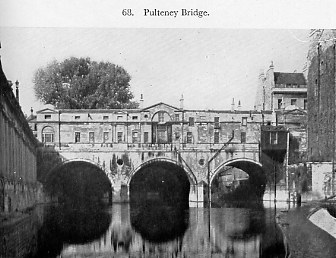 Since the mid-twentieth-century, fierce attachment to characterisations of Austen and how her novels are to be interpreted have been as frequently found in professional academic writing.17. The biographers and Janeites are not alone in their exploitation of silence and lack of objectivity. The most striking characteristic of the library of books Jane Austen's character and novels is that many writers never acknowledge a conflict of interpretations or insist that all who think the way they do are right and everyone else misguided. When it comes to talking about Austen's fiction, I confess to little patience with recent academic arguments based on what's not there, as in the now familiar line which runs that 'since Jane Austen never mentions the French revolution, it must be a central preoccupation, and its silent pressure can be detected at almost every point of her narratives'.18 I'd as lief go about to demonstrate that Jane Austen wrote the best ghost novels in the English language because there's nary a ghost in them.19 Yet the readings that emerge from recent academic ways of using silence are not all that different from older academic ways of allegorising Austen's books. These latter transform the specifics of her stories and particular characters through a process of generalisation in order to write about her novels as texts which analyse vast social changes in the later 18th century relevant to our era. Such essays and even those in which the writer reads Austen's books 'against the grain', that is, reverses the moral inferences Austen consciously meant us to come away with, can make us see in her fictions implications which are there and can enrich our imaginative experience of her books and those of her contemporaries too.20 A reader might think, well then, can we say anything we want about Austen and her books? No. At least in print, amid a welter of differing readings, a certain policing of what is written about Austen's novels goes on too.21 More strikingly than any other author I have come across, fear of hurting someone else's feelings, of trespassing on some values someone else might have felt validated in Austen's fiction or, worse, on touchy regions of someone else's dreams that they just might feel possessive about or not want any criticism of, limits what people who want to be read and listened to are willing to write openly. At the same time, no matter what the perspective, there is also a tendency to deny what seems to be Austen's plain meaning if it goes against the grain of late twentieth-century values. Thus while there is far more of a consensus on the quality and import of Austen's two posthumous Bath novels than there is about the first four, any group of essays or remarks about Northanger Abbey and Persuasion taken at random, turns up efforts either to bring Austen's attitudes more in line with those of today, or to argue, backhandedly and surreptitiously, the opposite opinion from that which the writer seems emphatically also to express. We are told that when we read Northanger Abbey 'we can be sure' that Austen's novel is not to be read like Eaton Stannard Barrett's pastiche, The Heroine (first published 1813), as simply dismissive of the Gothic mode, even though Austen wrote: 'I have torn through the 3d vol. of the Heroine, & do not think it falls off. -- It is a delightful burlesque, particularly on the Radcliffe style' (Letters, p. 256). An essay on Persuasion that opens with pages of grating quotations from Mary Musgrove's whining complaints, spiteful attacks and manipulative snobberies, reveals in its last two pages that it is an oblique argument meant to demonstrate how self-destructive or neurotic (this tough word is avoided) is the selfless suppressed suffering of an Anne Elliot -- who is so passive it takes her terrific effort to move from one seat to another in a large room in order to make her company temporarily available to a man she passionately loves. A third essayist assures us that he does not think there are truly close parallels between alienated romances of suicide by the twentieth- century American novelist, Anne Tyler, and Austen's Mansfield Park and Persuasion; nonetheless, he then proceeds to outline overt and subtle likenesses between the two novelists' works.22 When the writer reaches out from any of the fiction to say something about Austen's personality, life or political outlook, his or her tone seems inevitably to turn chary when the need to spell out a point lest it be overlooked because it will offend demands explicitness: 'I am, of course, implying that Jane Austen celebrates unhealthy solutions'. Or it turns sarcastic: In water-logged trench, in cold cave of the mountains, in sickness and in health, in dulness, tribulation and fatigue, an ever-increasing crowd of worshippers flies insatiably for comfort and company perenially refreshing, to Hartfield and Randalls, Longbourn, Northanger, Sotherton and Uppercross. [Yet] she was obviously ill-served by circumstances. Behind the official biographies . . . and the accounts of how good she was to her mother and wouldn't use the sofa, we feel always that she lived remote in a great reserve . . . the successful domestic unity will certainly not be sought at Longbourn or Mansfield, Northanger or Kellynch . . . Or defensive and strident: [Austen's] leading characters were depicted in stylized, familiar social situations; the reader, identifying with the character, was taught a code of behaviour which was not universal, for readers of other current books knew the alternatives. Austen's stress upon her heroines' subordinate role in a family, upon their dutifulness, meditativeness, self-abnegation, and self-control, were codes shared with other conservative writers, especially women moralists such as Jane West and Mary Brunton . . . There is a real desire in Jane . . . to live within the self . . . What happens in Persuasion, Wentworth's choice of a wife, and the discovery of true values which is implicit in that choice, remains in line with the conservative philosophy of all of Jane Austen's other novels . . . [the italics are the author's]. It is the rare writer who can simply quietly state what he supposes a portion of his audience will not want to be told: [Austen's] books are, as she meant them to be, read and enjoyed by precisely the sort of people whom she disliked; she is a literary classic of the society which attitudes like hers, held widely enough would undermine . . . Her object is not missionary; it is the more desperate one of merely finding some mode of existence for her critical attitudes . . . . The above statements would seem to be comically at odds: Austen, a woman who counsels retreat into the comparative safety of a family home, no matter how high the personal cost; Austen, the woman who lives at a great cool distance from those she is surrounded by; the entrenched conservative; the ultimate subversive, hating the complacent ease with which those among whom she must live accept absurd and detestable behaviour and pay lip service to spoken rationales.23 Yet I think they are not. There is a common ground here, one which is flexible enough to contain what Henry Austen first wrote about his sister, most of the biographical portraits of her in Bath, and what some of the Janeites and professional critics have written about her books too. It was glimpsed or circled around as far back as 1821, when Richard Whateley, Archbishop of Dublin, and again in 1862 when another Victorian woman novelist, Julia Kavanagh, tried to describe the personality type which produced the novels. What they hit upon was a variant of Jung's description of the introverted woman, one of intensive feelings, who keeps these feelings inaccessible to others, who when intelligent reasons about her actions based on her own consciousness, someone inclined to melancholy, but capable of responding very coldly to anything perceived as a threat to her autonomy and desirous of some intense emotional response from others which will make that other subject to her. Since they lacked the abstract language of modern psychology, and they are reading the novels as romances, they picture Austen's real inner life as they found it in her depictions of women in love. Whateley draws our attention to Fanny Price's reserve, and self-arming against Henry Crawford and her 'vehement attachment' to Edmund: The silence in which this passion is cherished -- the slender hopes and enjoyments by which it is fed -- the restlessness and jealousy with which it fills a mind naturally active, contented and unsuspicious -- the manner in which it tinges every event and every reflection, are painted with a vividness of detail of whch we can scarcely conceive any one but a female, and we should almost add, a female writing from recollection, capable. Julia Kavanagh discerns the same paradigmatic experience in Fanny's role as confidante to Edmund Bertram in Mansfield Park, suggests it first emerges in the portrait of Elinor's self-contained torment in her scenes with Lucy Steele in Sense and Sensiblity, and says it occurs last 'but with more power than in either' of the first two in Persuasion where 'she showed what can be the feelings of a woman compelled to see the love she most longs for, leaving her day by day'. Kavanagh links Austen's picture of Anne Elliot's inner life to Charlotte Brontė's picture of Jane Eyre, and says though it is 'the more subdued', it is 'not the less keen'. She too feels there is some reality outside the fiction to which Austen's portraits of long disappointments, secret griefs, and ill-repressed jealousies pertains.24 However, we need not limit this outlook to the more poignant characters, the hard satiric ones reveal it too. I would add not only Jane Bennet, Elizabeth Watson and Jane Fairfax to Whateley and Kavanagh's list, but also Margaret Watson and Lady Susan Vernon. The same common ground is brought before us as central to Austen's perception of the experience of life in her novels by more recent critics. An eloquent instance is a famous essay by Lionel Trilling in which he praises Mansfield Park as a great novel which offends so many readers because it redefines courage to mean quiet endurance, suffering what you dislike as long as you are not bodily threatened, and because it anathematises the pleasures of overt sexual triumph. More, No other great novel has so anxiously asserted the need to find security, to establish, in fixity and enclosure, a refuge from the dangers of openness and chance . . . [Mansfield Park] scandalises modern assumptions about social relations, about virtue, about religion, sex, and art. Most troubling of all is its preference for rest over motion. To deal with the world by condemning it, by withdrawing from it and shutting it out . . . to live one's days in a '['contrived'] stasis and peace . . . to us seems not merely impracticable but almost wicked. Trilling sees the 'terrified little stranger' (Fanny Price) of
Mansfield Park as continually fending off 'smallness of mind,
insufficiency of awareness, assertive self-esteem, the wish to devalue,
especially to devalue the human worth of other people'. Roger Gard has
taken Trilling's insights further to argue that Fanny is not liked
because she is a nervous underdog; Austen has conceived her as someone
innately intelligent and kind, who holds tight to conventions as a
carapace to protect her 'precariously held calm' against all comers,
someone who because others don't appreciate her deserves 'a special and
tender affection'. This arouses distaste. All this also fits Jung's
introverted subjective female: such a type is likely to find herself
undervalued because in the public world it is the visible and tangible
that is acknowledged and can be admired; experience teaches her to
perceive others as potential oppressors against whom she must defend
her identity, and she is forced into enacting the psychology of an
egotistical underdog.25  My view is that at the present time no persuasive biography of Jane Austen is possible. The kind of evidence which would command assent, non-fictional documents written or dictated by her which have come down to us in a non-mutilated state and could be taken as representative of she fully was, don't exist. The first letter we have by her was written when she was twenty-one. The few statements -- quoted the mother -- has been attributed to her was said by other people; don't know context. We have no idea how Jane Austen saw her childhood or adolescence, what that happened then counted to her or how her memories from her childhood and adolescence affected her adult life. There are no statements by her that we can say with certainty are about her childhood. The only scrap by her comes from her early years, and has been found in a volume of Fables choisies with the name Jane Austen inscribed in December 1783. On its advertisement page we find her brother, Frank, practising his signature with differing flourishes, and near these the scrawl: 'I wish I had done' and 'Mothers angry father's gone out'. These few words may not, of course, have been written by Jane. They do at least ring to my ears like the real words of a real child caught up in the vexations of everyday life. The phrase she wrote to Cassandra in which she referred to one of the two periods in which she went to school, was written when she was twenty- one, and she uses it to flatter Cassandra: 'The letter which I have this moment received from you has diverted me beyond moderation. I could die of laughter at it, as they used to say at school' (Letters, p. 5).26 What is possible is to draw out the life that exists in the work. Enough of Austen is there, though the interpretation and tones are thick with irony and sentiment, both undercutting one another. Readers drawn to Austen's fiction know this. To read Austen is to take aspects of her experience into your own imagination as so many words left on the pages of her stories. Readers of her fiction say they hear imagined voices and come into contact with an imagined individual writer; they testify to disappointment with what's left of her letters because this imagined voice is not or is hardly ever there.27 This is not biography but literary criticism, and one can only seek in her fictions what one brings to them, and one is limited by one's own point of view and responsiveness. Beyond that one can take a psychological approach supported by literary history and a cultural portrait of Bath and the spas and countryside Austen visited while there.28 The portrait that emerges will be disagreed with and if it subverts conventional norms will probably be disagreed with strongly and dismissed. If it agrees with conventional norms, it will be seen as Janeism. In the present atmosphere of semi-adulation and the use by academics of Austen and her novels as a name and groundworks with which to conjure up exemplary subpolitical and feminist explications, as much relevant documentary evidence as we can obtain is necessary. Where can this be found? In the books she read, and in an investigation of how she uses them in those of her novels that are either set in Bath or documentary and internal evidence demonstrates were written or copied out in Bath. In the letters and diaries of women like herself, chaste gentlewomen living on limited incomes in Bath who, like her, visited places like Lyme, Sidmouth, Weymouth, Ramsgate, Tunbridge Wells, Southampton, the Isle of Wight. One would look to see what Bath meant to such women for real. Why does it figure so prominently in Jane Austen's Northanger Abbey and Persuasion, and marginally as a place where people get into trouble or remember as alluring. What it was like to be the Jane Austen in Bath and write these two books. She was a great reader, and the place to begin the journey would be the circulating library at Portsmouth. She dreamed her books up the way her Fanny Price dreams over her prints in her escape-hutch, her attic. |
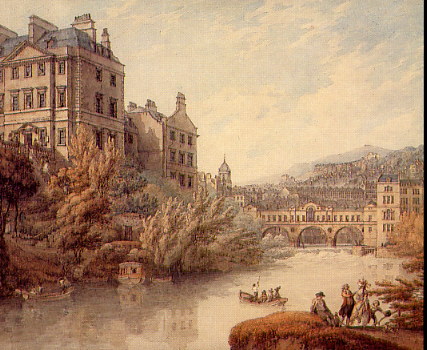
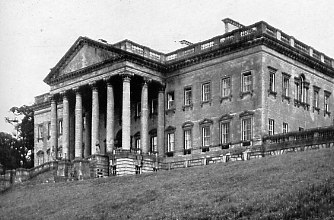
|
1 Henry Austen's 'Biographical Notice' will be quoted in my text with page references from Jane Austen, Persuasion, with A Memoir of Jane Austen by J. E. Austen-Leigh, ed. D. W. Harding (New York, 1965), pp. 29-34. The same strategic defensiveness continued into the early twentieth century; see Mary Augusta Austen- Leigh, Edward James Austen-Leigh: A Memoir (Privately published, 1911), p. 13: 'It was certainly not at Chawton and Godmersham that Jane observed the spirit in which the John Dashwoods acted towards their relations'. 2 Much of this short or unfinished material did not become available to readers until the twentieth century; popular paperback editions and academic essays on Love and Freindship , Lady Susan , the unfinished novels and juvenilia have only begun to appear in the last two decades. The initial publication history is as follows: 1871, The Watsons , Lady Susan , and one of the cancelled chapters of Persuasion ; 1922, Love and Freindship ; 1925, Sanditon ; 1926, Plan of a Novel and both cancelled chapters of Persuasion ; 1951 Catherine, or The Bower ; 1954 Chapman's Minor Works which collected all the Juvenilia , the poetry and prayers, 'Plan of a novel', 'Opinions' on Mansfield Park and Emma ' previously available in small scattered editions into one volume; 1980 Sir Charles Grandison, or The Happy Man (this is a publication by facsimile of a draft with all its corrections left intact on the page). 3 See B. C. Southam, Jane Austen's Literary Manuscripts: A study of the novelist's development through the surviving papers (Oxford, 1964), pp. 52-54. 4 For details see Letters , pp. 31-32, 334, 365n.4, 5446n.1, 464n4; A Memoir of Jane Austen by J. E. Austen Leigh in Persuasion , ed. D. W. Harding, p. 363, and William Austen-Leigh and Richard Athur Austen-Leigh, Jane Austen: Her Life and Letters: A Family Record , 2nd Edition (London, 1913), pp. 230-34, 330; Deirdre Le Faye, Jane Austen: A Family Record (London, 1989), pp. 128; 131-32, 221, 145; with page references referred to in my text as Memoir, Life and Family Record ; David Gilson, A Bibliography of Jane Austen (Oxford, 1997), pp. 16-17, 48-49, 59-60, 67-69, 82-83. See also Jane Aiken Hodge, 'Jane Austen and her publishers', Jane Austen: Bicentenary essays , ed. John Halperin (London, 1975), pp. 74-85; and Jan Fergus, 'The professional woman writer', The Cambridge Companion to Jane Austen , edd. Edward Copeland and Juliet McMaster (Cambridge, 1997), pp. 12-31. 5 See also Southam, Jane Austen's Literary Manuscripts , p. 53. 6 Caroline Austen, My Aunt Jane, A Memoir (Winchester, 1991), pp. 9-10, cited in my text as Aunt Jane . 7 R. W. Chapman, Jane Austen: Facts and Problems (Oxford, 1949), p. 62; Margaret Wilson, Almost Another Sister: The Family life of Fanny Knight, Jane Austen's favourite niece (Kent, 1990), p. 37; for the commands to burn and the excisions from Eliza and Philadelphia Walter's letters see, Austen Papers, pp. 124, 129, 131, 134, 138-45, 147, 150, 155- 67, 172-74, 235. As Eliza's mother, Philadelphia Austen Hancock was not married to Hastings, but to Hasting's business associate, Tysoe Saul Hancock, the Austen family destroyed all explicit references to Eliza's parentage; unfortunately this has allowed some scholars today to produce laboured arguments which deny the obvious and help further to obscure Jane Austen's experience of life; see George Holbert Tucker, A History of Jane Austen's Family (Gloucestershire, 1983), pp. 37-44. 8 Mary Augusta Austen-Leigh, Edward James Austen-Leigh: A Memoir, pp. 262-63; J. H. Hubback and Edith C. Hubback, Jane Austen's Sailor Brothers (New York, 1906; reprinted London, 1986), hereinafter referred to in my text as Sailor Brothers . A critical history of Jane Austen's biography has yet to be written. To pick up something how it has formed, which books have been most influential, and the ways in which many of the smaller publications fed into legends, see Le Faye, A Family Record , pp. 230-56, 295-307; Maggie Lane, Jane Austen's Family Through Five Generations (London, 1984), pp. 237- 51; Chapman, Jane Austen: Facts and Problems , pp. 169-73; Park Honan, 'Biographies' in The Jane Austen Handbook , edd. J. David Grey, Brian Southam and A. Walton Litz (London, 1986), pp. 18- 20; Bruce Stovel, 'Further Reading', The Cambridge Companion to Jane Austen , pp. 227-31; David Nokes, Jane Austen: A Life (New York, 1997), pp. 242-44. 9 This idea pervades a number of iconoclastic and feminist books on Austen; see, for example, John Halperin, The Life of Jane Austen (Baltimore, Maryland, 1986), pp. 3-8; Nokes, Jane Austen: A Life , pp. 1-7; Margaret Kirkham, Jane Austen, Feminism and Fiction (London, 1997), pp. 53-66. 10 See Claire Tomalin, Jane Austen (New York, 1997), pp. 165-202, 216-17; and Marghanita Laski, Jane Austen (New York, 1997), pp. 52-62; Nokes, Jane Austen: A Life , pp. 231-303. Those adhering to the third view include Q. D. Leavis, 'A Critical Theory of Jane Austen's Writings', Scrutiny , 10 (1941), pp. 61-90, 114-42;, 272-94; 12 (1944), pp. 104-19; Brian Southam, Jane Austen's Literary Manuscripts: A study of the novelist's development through the surviving papers (Oxford, 1964); Yasmine Gooneratne, Jane Austen (Cambridge, 1970). See also Tucker, A History of Jane Austen's Family , p. 129. The picture of Austen as a business woman whose professionalism has been hidden from us is found in Jan Fergus, Jane Austen, A Literary Life (New York, 1991). 11 This depiction of Austen as 'really cheerful' while she lived in Bath informs all four books which have dealt just with Austen's time at Bath: 1938, Laura Maria Ragg, Jane Austen in Bath ; 1939, Emma Austen-Leigh, Jane Austen and Bath; 1969, Jean Freeman, Jane Austen in Bath; and 1988, Maggie Lane, A Charming Place: Bath in the Life and Novels of Jane Austen . Elizabeth Jenkins also produces a mostly cheerful 'healthy' Jane in Bath, Jane Austen (New York, 1949), pp. 88- 177. See my review of Peter Borsay's The Georgian Image of Bath. I include a select bibliography of major books on Bath. 12 These are respectively George Holbert Tucker, Jane Austen the Woman: Some Biographical Insights (New York, 1994); Halperin, The Life of Jane Austen, and Deborah Kaplan, Jane Austen Among Women (Baltimore, Maryland, 1992), pp. 155- 81. 13 See Brian Southam, 'Introduction', Jane Austen: The Critical Heritage , ed. Brian Southam, 2 vols. (London, 1968), i, pp. 1-28; John Halerin, 'Jane Austen's nineteenth- century critics', Jane Austen: Bicententary essays , pp. 3- 25; David Gilson, 'Editions and Publishing History, The Jane Austen Handbook , pp. 135-39; Gilson, A Bibliography of Jane Austen , pp. 135-36; Terry Eagleton, Literary Theory: An Introduction (Minneapolis, Minnesota, 1983), pp. 1-54. See Tony Tanner, Jane Austen (Cambridge, Massachusetts, 1986), pp. 1- 35. 14 See Brian Southam, Southam, 'Introduction', Jane Austen: The Critical Heritage , i, pp. 29-33; John Halerin, 'Jane Austen's nineteenth-century critics', Jane Austen: Bicententary essays , pp. 25-30; Ruth M. Robbins, 'Without the Gift of Tongues', Collected Reports of the Jane Austen Society , 1966-75, 1968, pp. 66-75; Claudia L. Johnson, 'Austen cults and cultures', The Cambridge Companion to Jane Austen , pp. 211- 26; and Margaret Kirkham, 'The Austen Portraits and the Received Biography', Jane Austen: New Perspectives , pp. 29-38. 15 See Anna Lefroy's letter to Austen-Leigh in Jane Austen's Sandition: A Continuation by her Neice, Together With 'Reminiscences of Aunt Jane' by Anna Austen Lefroy, transcribed, edited and introduced by Mary Gaither Marshall (Chicago, 1983), pp. 155-68. This edition contains another 'improvement' on Cassandra's sketch in the tradition begun by Mr Andrews. See also Reminiscences of Caroline Austen , introduced by Deirdre Le Faye (South Witham, Lincolnshire, 1986), especially pp. 28-29, 32-38, 58, cited in my text as Reminiscences ; Margaret Oliphant, from an unsigned article in Blackwood's Edinburgh Magazine (March 1870), Jane Austen: The Critical Heritage , i, pp. 216-22; and Nokes, Jane Austen: A Life , pp. 56-77. 16 See Suzanne Juhasz, Reading from the Heart: Women, Literature, and the Search for True Love (New York, 1994), pp. 1-68; Sheila Kaye-Smith and G. B. Stern, Speaking of Jane Austen (London, 1944), pp. 4-6, 18-19, and More About Jane Austen (London, 1949); Edmund Wilson's review, 'A Long Talk about Jane Austen', Jane Austen: A Collection of Critical Essays , ed. Ian Watt (New Jersey, 1963), pp. 35-40; Brian Southam, 'Janeites and Anti-Janeites', he Jane Austen Handbook , pp. 237-43; Juliet McMaster, 'Jane Austen as a Cultural Phenomenon', Jane Austen the Novelist (New York, 1996), pp. 3-9. 17 Famous passionate detesters of Austen include Charlotte Brontė, Ralph Waldo Emerson, Mark Twain, D. H. Lawrence, Kingsley Amis, H. W. Garrod, to name but a few; for an exquisitely ironic savaging of Austen's books, letters and those who admire these, see Sir Harold Nicolson's 'Address' to the Annual General Meeting of the Jane Austen Society, Collected Reports of the Jane Austen Society, 1949-65 , 1956, pp. 94-103. 18 See Alistair M. Duckworth, 'Jane Austen and the Conflict of Interpretations' and David Spring, 'Interpreters of Jane Austen's Social World', Jane Austen: New Perspectives , ed. Janet Todd, pp. 39-72; John Sutherland, 'Where does Sir Thomas's wealth come from?': Jane Austen, Mansfield Park', Is Heathcliff a Murderer? (Oxford, 1996), pp. 4-5; Warren Roberts, Jane Austen and the French Revolution (London, 1979); for a deconstructist example of this kind of ploy see Maaja A. Stewart, Domestic Realities and Imperial Fictions: Jane Austen's Novels in Eighteenth- Century Contexts (Athens, Georgia, 1993). 19 But see Hugh Cecil, '"The sound of distant moans": Reflections on Northanger Abbey and the British ghost story', Collected Reports of the Jane Austen Society , 1986-95, 1992, pp. 269-78. 20 See, for example, Julia Prewitt Brown's Jane Austen's Novels: Social Change and Literary Form (London, 1979); also the deliberately inflammatory Eve Kosofsky Sedgwick's 'Jane Austen and the Masturbating Girl,' Critical Inquiry , 17 (1991), pp. 818-37. See also Claudia L. Johnson, 'Austen cults and cultures', p. 224. 21 In cyberspace, anything goes; see the Archives
of Austen-l, a list run from McGill University,
22 See Cantrell, D. Dean, 'Her Passion for Ancient
Edifices', Persuasions , 7 (1985), pp. 89-93; Ty, Eleanor,
'Catherine's Real and Imagined Fears: What Happens to Female Bodies in
Gothic Castles', Persuasions , 20 (1998), pp. 248-60; and
Fergus, Jan, 'My sore throats, you know, are always worse than
anybody's: Mary Musgrove and Jane Austen's Art of Whining' and 'Jane
Austen and Anne Tyler, Sister Novelists Under the Skin',
Persuasions , 15 (1993), pp. 139-47, 165-69. General books
which show that controversy swirls around Sense and
Sensibility , Pride and Prejudice , Mansfield
Park and Emma , but not the posthumous novels include
Tanner, Jane Austen; Roger Gard, The Art of Clarity (New
Haven, Connecticut, 1992) and Claudia Johnson, Women, Politics, and
the Novel (Chicago, 1998).
23 Barnard Paris, Character and Conflict in Jane
Austen's Novels: A Psychological Approach (Detroit, Michigan,
1978), pp. 140-67; Reginald Farrar, 'Jane Austen', The Critical
Heritage , ii, pp. 246-47; Marilyn Butler, Jane Austen and the
War of Ideas (Oxford, 1975), pp. xvi-xvii, 179-81, 268, 276; D.
W. Harding, Regulated Hatred and other essays on Jane Austen
(London, 1998), pp. 6-15. See also my review of In a Fast Coach with a Pretty Women: Jane Austen and Samuel Johnson by Gloria Sybil Gross.
24 Carl Jung, Psychological Types
(Princeton, 1971), pp. 373-93; Richard Whateley, an unsigned review of
Northanger Abbey and Persuasion , Julia Kavanagh,
'Miss Austen's Six Novels', The Critical Heritage , i, pp. 87-
105, 176-97.
25 Lionel Trilling, 'Mansfield Park', Jane
Austen: A Collection of Critical Essays , pp. 124-40; see also
Tanner, Jane Austen , 'The Quiet Thing': Mansfield
Park ', pp. 142-75; Gard, The Art of Clarity, pp. 121-54l; Jung,
Psychological Types , pp. 392-93. See also Mark Schorer's
'The Humiliation of Emma Woodhouse', Jane Austen: A Collection of
Critical Essays , pp. 98-111, for the same terrain in Emma.
26 Tomalin, Jane Austen: A Life, p. 39.
27 See Susan C. Whealler, 'Prose and Power in Two
Letters by Jane Austen', Sent as a Gift: Eight Correspondences
from the Eighteenth Century , ed. Alan T. McKenzie (Athens,
Georgia, 1993), pp. 180-82.
28 The model for such an approach would be Margaret
Anne Doody's Frances Burney: The Life in the Works (New
Brunswick, New Jersey, 1988)
|
